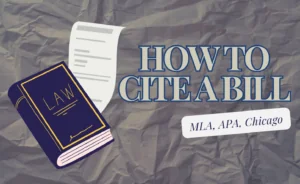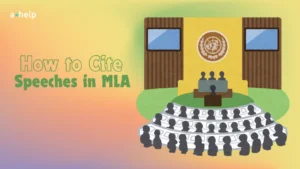Quoting is a fundamental aspect of academic writing, allowing authors to directly reference the work of others to support their arguments, provide evidence, or highlight a particularly impactful statement.

✅ AI Essay Writer ✅ AI Detector ✅ Plagchecker ✅ Paraphraser
✅ Summarizer ✅ Citation Generator
Effective quoting and citing sources is fundamental to any form of writing. However, different fields and disciplines prefer different citation styles, each with its own set of rules and formats. This article will guide you through the essentials of quoting others across three major citation styles: APA, MLA, and Chicago, providing clear examples to demystify the process.
APA Style
APA style is widely used in the social sciences. It emphasizes the author-date method of in-text citation and a comprehensive reference list at the document’s end.
- Direct Quote: When quoting directly, include the author’s last name, the year of publication, and the page number. For instance, (Smith, 2020, p. 15).
- Paraphrasing: If you’re paraphrasing someone else’s ideas, mention the author and year. For example, (Smith, 2020).
- Quoting Longer Passages: For quotes longer than 40 words, format it as a block quote without quotation marks and include the author, year, and page number.
- Multiple Authors: For two authors, use both names every time you reference their work (Smith & Jones, 2020). For three or more, list the first author followed by “et al.” (Smith et al., 2020).
- Electronic Sources: If available, include a DOI or URL at the end of the citation. For example, (Smith, 2020, para. 4) or (Smith, 2020, Section Heading).
MLA Style
MLA style is preferred in the humanities, especially in literature and language studies. It features author-page format for in-text citations and a Works Cited page.
- Direct Quote: Incorporate the author’s last name and the page number in parentheses. For example, (Smith 15).
- Paraphrasing: Similar to direct quotes, but without the page number if not directly referencing a specific text portion. For example, (Smith).
- Quoting Poetry: Use line numbers instead of page numbers. For instance, (Smith lines 10-12).
- Multiple Authors: For a work by two authors, include both names (Smith and Jones 45). For three or more authors, use the first author’s last name followed by “et al.” (Smith et al. 76).
- Electronic Sources: If no page numbers are available, use the author’s last name only. For sources without an author, use the title of the piece.
Chicago Style
Chicago style is versatile, widely used in both the humanities and social sciences. It offers two systems: the Author-Date system and the Notes-Bibliography system.
- Direct Quote (Notes-Bibliography): Use footnotes or endnotes for citations, including the author’s name, the source title, and the page number.
- Direct Quote (Author-Date): Similar to APA, include the author’s last name, the publication year, and page number in parentheses. For example, (Smith 2020, 15).
- Paraphrasing (Notes-Bibliography): A note number leading to the citation detail at the bottom of the page or the end of the chapter.
- Paraphrasing (Author-Date): Just the author’s last name and year of publication. For example, (Smith 2020).
- Electronic Sources: For the Notes-Bibliography system, include a URL or DOI in the notes. In the Author-Date system, include it in the reference list.
Wrap Up
Quoting and citing the work of others is a critical component of responsible and ethical writing. Whether you’re drafting an academic paper, compiling research, or even writing a blog post, understanding how to properly attribute words and ideas to their original authors is crucial. Remember, the goal of quoting isn’t just to bolster your argument with the authority of others, but to engage in a larger conversation, acknowledging the contributions of those who have laid the groundwork before you.
FAQ
Follow us on Reddit for more insights and updates.





Comments (0)
Welcome to A*Help comments!
We’re all about debate and discussion at A*Help.
We value the diverse opinions of users, so you may find points of view that you don’t agree with. And that’s cool. However, there are certain things we’re not OK with: attempts to manipulate our data in any way, for example, or the posting of discriminative, offensive, hateful, or disparaging material.